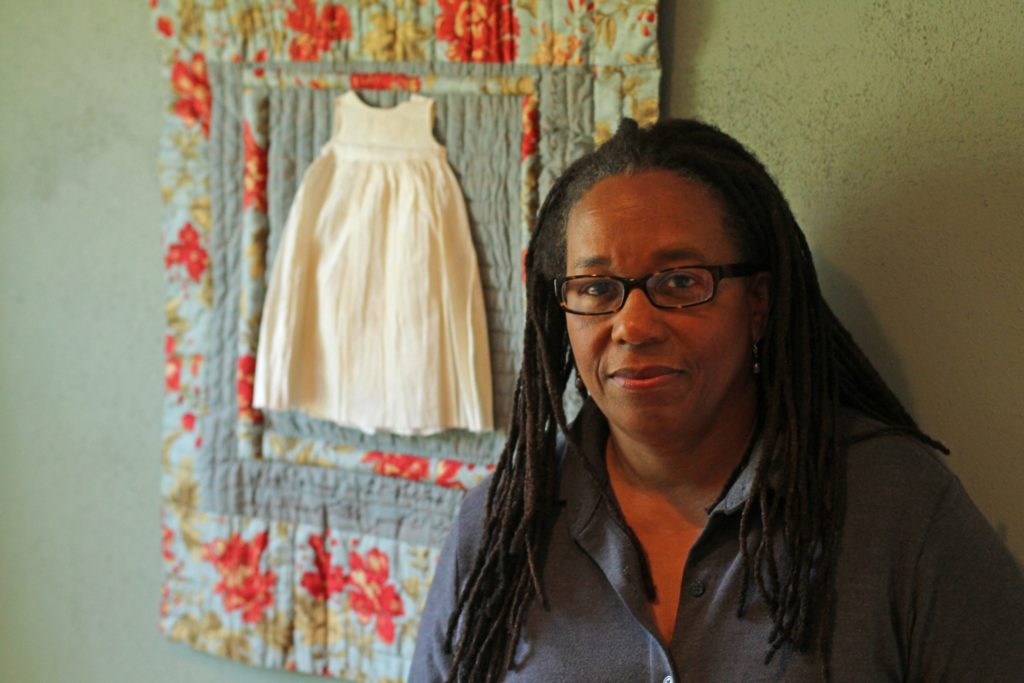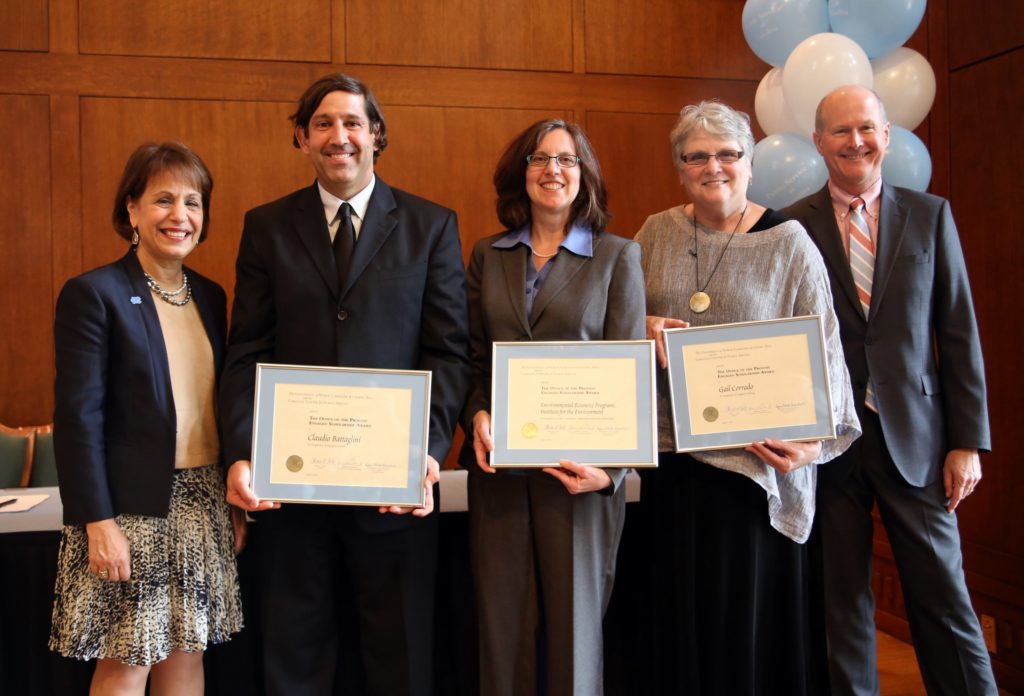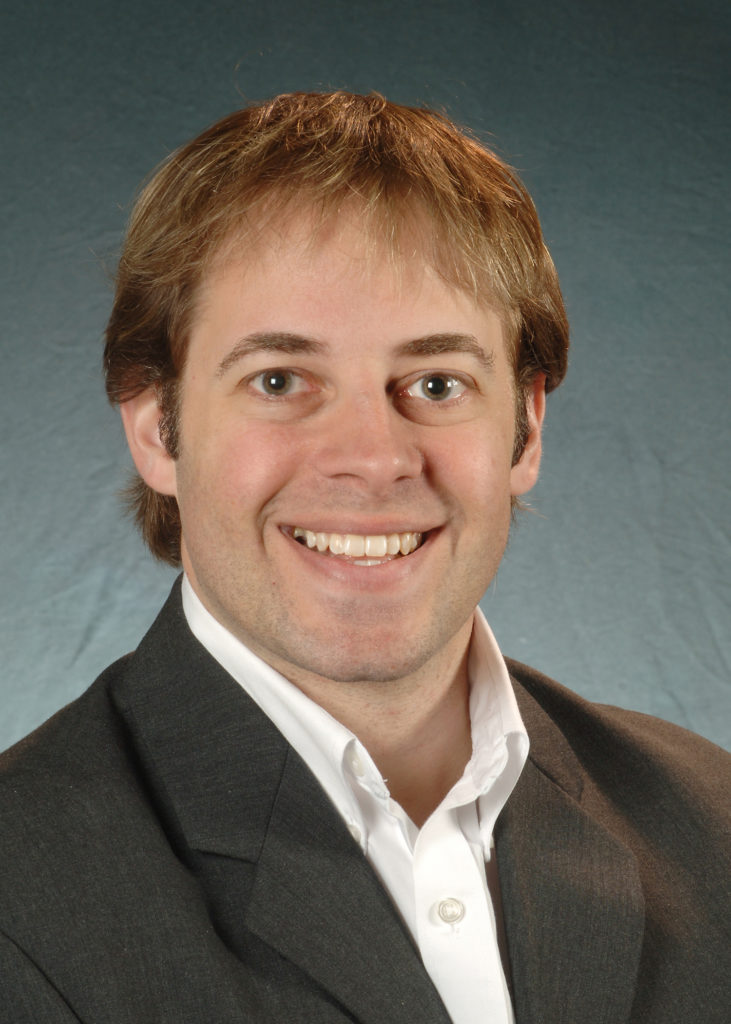
Students aren’t the only ones gearing up for the fall semester – or moving in on campus.
Like many of the new Tar Heels arriving in Chapel Hill this week, rookie chemistry professor Frank Leibfarth is learning his way around, unpacking boxes, settling into his new role at Carolina and generally feeling overwhelmed.
“Every day I come to work and I need to do something that I have no idea how to do,” he said.
Leibfarth has spent the weeks leading up to the school year preparing to begin his new career as an assistant professor in the College of Arts and Sciences at the University of North Carolina at Chapel Hill by prepping to teach his first course in the fall while also retrofitting an outdated lab in Kenan Laboratories to house his research group.
“I’ve been hoping to be in a position like this for the last five or six years,” he said. “Most of the things I’ve done in my life during that time, including a lot of sacrifices, have gone into putting myself in the position to be here. Having it all finally happen is really, really exciting.”
A late start
Leibfarth didn’t always want to be a chemist. Growing up in Yankton, South Dakota, he didn’t really know what he wanted to do at all.
“I was always good at school, but in small-town middle-America you just don’t have a lot of people to look up to who have high levels of education,” he said. “The jobs in our town were manufacturing and the hospital. The people in town to look up to were mostly physicians.”
It wasn’t until his second year at the University of South Dakota when he enrolled in an organic chemistry class that he realized chemistry was his calling. Organic chemistry, he said, was the first that really connected.
It wasn’t just about memorizing facts or numbers; it was about finding new ways to create.
“Organic chemistry is a mix between art and science,” Leibfarth. “It’s hardcore science, but you also have to think about these three-dimensional shapes and how to put them together in creative ways.”
The new passion lined up with his hopes to leave South Dakota during the summer before his junior year in college. Leibfarth applied for research internships across the country, but less than a full year into the field, he was rejected by 10 of the 11 programs he applied for.
But one said yes: Columbia University.
“Once I got into a research atmosphere, learned that this was an option and met people with PhD’s in science, that really opened my eyes up to a whole new world,” Leibfarth said. “That summer was when I decided that’s what I wanted to do.”

He returned to school declaring a major in chemistry as a junior, juggling the academic rigors of the field with his position as kicker on the University of South Dakota’s football team.
With the late move into chemistry and the ability to play another year of football, Leibfarth spent an extra year at University of South Dakota before beginning a graduate program in chemistry and biochemistry at the University of California at Santa Barbara.
As a graduate student, his enthusiasm for organic chemistry evolved into an interest in polymer chemistry. It was the ability to use his research in real-world applications that drew him to the topic.
Throughout his graduate studies, Leibfarth focused on high-tech engineering and biomedical applications.
“When you go to work in plastics or you’re making new polymers, you’re really at the forefront of a very applied area of the science,” he said. “You’re pretty close to industry and what people could eventually use in their daily lives. I really liked that interface of fundamental science and working in a discipline that’s pretty close to industry and application.”
After graduating with his PhD in 2013, Leibfarth accepted a postdoctoral fellowship at the Massachusetts Institute for Technology where he diversified his research experience. Working alongside colleagues in the engineering department, he aimed to build a self-contained instrument that provides scientists who are not experts in organic chemistry access to a variety of specialty molecules they otherwise would not have the capability of making.
Three years later, it was time to hit the job market.
‘A fish out of water’
Even before visiting, the University of North Carolina at Chapel Hill was high on Leibfarth’s list of possible landing spots. Once he was offered the position, he immediately jumped at it.
“This is unquestionably in the top tier of public universities in the country,” he said. “People are really into working together to solve big problems and that was one of the things I was really looking for. I want to build a collaborative, multidisciplinary research group. This is the place to do that.”

Leibfarth officially began his assistant professor position July 1, and immediately hit the ground running: ordering new equipment for the lab, organizing classes, connecting with colleagues and beginning new research.
“Starting this job is very much like the first few weeks of college when you feel so much like a fish out of water and everything’s completely new and you look at the end goal and it feels so far away,” he said.
The first and largest task has been to transform an obsolete lab into a functioning research facility. Having been empty for several years, the lab was need of serious upgrades.
“Setting up the lab is really intimidating because you just need so many little things that you don’t even think about on a daily basis when you’re working in a fully functioning lab,” he said. “I have to do everything in the lab. I’m ordering this really large equipment and then I’m in there on my hands and knees scrubbing dirt off the floor and counters. I’m everything from the janitor cleaning up to the head of the lab looking to run a large research group.”
With a goal of finishing a portion of the lab by October, Leibfarth hopes to bring in three or four graduate students to begin his research group’s work. The group, he said, will start with two main goals: finding sustainable and biodegradable replacements for petroleum derived materials that bioaccumulate, and creating technology that will screen hundreds of molecules to establish the best material for an application.
“This will really change the mindset toward materials discovery because we won’t be limited by making these molecules,” he said. “We’ll only be limited by our imagination and what we can dream up.”
Eventually, his lab will include a dozen students focusing on not just the group’s objective, but also Leibfarth’s goal of producing the best science and chemists possible.
“I came to Carolina because this is a place where we can build a truly world-class research group,” he said. “I didn’t come here to be mediocre, and the students aren’t joining a university of this caliber to be just OK and to have an OK career. The culture I want to create is a commitment to being the absolute best you can be, both individually and as a research group.”
Photos by Melanie Busbee, story by Brandon Bieltz, UNC Office of Communications and Public Affairs




